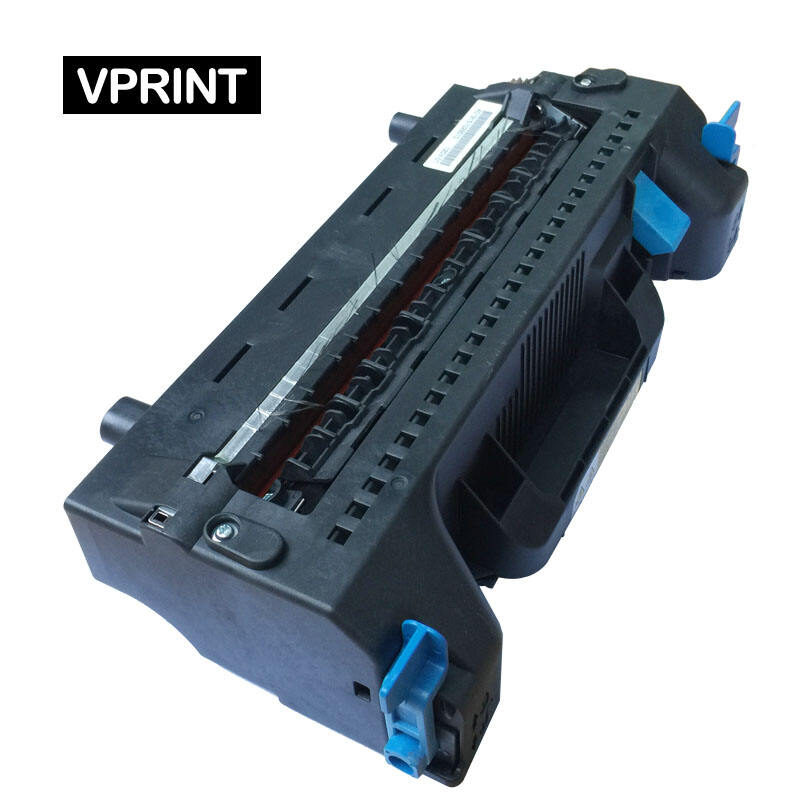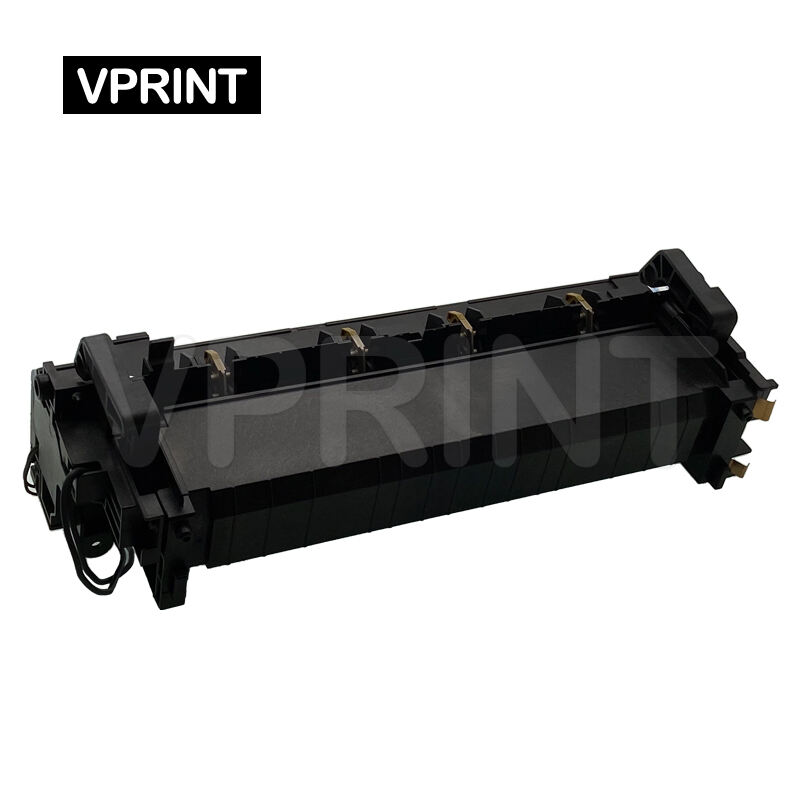What Is an OKI Fuser and How Does It Affect Print Quality?
In laser printers, the fuser is a critical component that transforms loose toner powder into sharp, permanent images on paper. For OKI printers—known for their reliability in office and industrial settings—the OKI Fuser plays a key role in ensuring consistent, high-quality prints. Without a properly functioning fuser, even the best toner and printer settings can result in smudged, faded, or unreadable documents. This guide explains what an OKI Fuser is, how it works, and why it has a direct impact on print quality, helping users understand its importance and how to maintain it.
What Is an OKI Fuser?
An OKI Fuser is a component in OKI laser printers responsible for bonding toner to paper. Laser printing works by first transferring toner—a fine, dry powder—to paper using an electrostatic charge. However, this toner is only loosely attached at this stage, easily smudging or rubbing off. The fuser solves this by applying heat and pressure to melt the toner particles, causing them to fuse permanently into the paper fibers.
OKI Fusers are designed specifically for OKI printer models, ensuring compatibility and optimal performance. They consist of two main parts: a heated roller (or heating element) and a pressure roller. The heated roller reaches high temperatures—typically between 180°C and 220°C (356°F and 428°F)—to melt the toner, while the pressure roller presses the paper against the heated roller, ensuring the melted toner adheres evenly.
OKI Fusers are built to handle the demands of regular printing, with durable materials that resist wear from heat and repeated use. They come in different sizes and specifications to match various OKI printer models, from small office printers to high-volume industrial machines, each tailored to the printer’s speed, paper size, and print volume capabilities.
How an OKI Fuser Works in the Printing Process
To understand the OKI Fuser’s role in print quality, it helps to break down its place in the laser printing process:
- Toner Transfer: First, the printer creates an electrostatic image on a photoreceptor drum, which attracts toner particles. This toner is then transferred onto the paper, forming the desired text or image—but only temporarily.
- Fusing Stage: The paper then moves into the fuser unit. As it passes between the heated roller and pressure roller, the heat melts the toner, and the pressure presses it into the paper. This fusing process transforms the loose toner into a permanent part of the paper.
- Cooling: After fusing, the paper cools slightly, allowing the toner to harden and set fully. This ensures the print remains smudge-free even when handled immediately.
The OKI Fuser’s timing and temperature control are critical here. If the temperature is too low, the toner won’t melt properly and may smudge. If too high, it could damage the paper (causing curling, discoloration, or even burning) or over-melt the toner, leading to blurring. OKI Fusers are engineered with precise temperature sensors and controls to maintain the ideal heat level for different paper types, from standard office paper to thicker cardstock or labels.
How the OKI Fuser Directly Affects Print Quality
The OKI Fuser has a direct and significant impact on print quality. Even if the toner is applied perfectly, a faulty or poorly maintained fuser can ruin the final result. Here are the key ways it affects prints:
Toner Adhesion and Smudge Resistance
The most obvious role of the OKI Fuser is ensuring toner sticks to the paper. A properly functioning fuser melts the toner evenly, so it bonds securely. This means prints resist smudging, even when touched immediately after printing or when exposed to moisture. For example, a document printed with a working fuser will remain sharp if you accidentally brush your hand over it, while one with a faulty fuser may leave toner smudges on your fingers or smears across the page.
Inconsistent heat or pressure in the fuser can cause uneven adhesion. You might notice some areas of the print—like dense text or large images—smudge more easily than others, indicating the fuser failed to melt the toner properly in those spots. This is especially problematic for documents that need to be handled frequently, such as reports, invoices, or labels.

Print Sharpness and Clarity
The OKI Fuser also affects how sharp and clear prints appear. When toner melts evenly under consistent heat and pressure, it retains the precise edges of text and images. If the fuser’s heat is uneven, toner may spread or bleed, blurring text or making fine details (like small fonts or thin lines) hard to read.
For example, a fuser with a damaged heating roller—such as one with scratches or uneven wear—might create streaks or blurred areas in prints. The pressure roller, if worn or misaligned, can cause uneven pressure, leading to parts of the image being lighter or less defined than others. OKI Fusers are designed to maintain uniform heat and pressure across the roller surfaces, ensuring every part of the print is sharp and clear.
Paper Handling and Quality
The OKI Fuser’s performance also impacts how the paper looks after printing. High-quality fusing ensures the paper remains flat and undamaged, while a faulty fuser can cause issues like:
- Paper Curling: If the heated roller is too hot or the pressure is uneven, the paper may curl upward or downward as it exits the fuser. This is because heat causes paper fibers to expand, and uneven heating leads to uneven expansion.
- Discoloration or Burning: Excessive heat can yellow paper or leave brownish marks, especially on lightweight or sensitive papers. In extreme cases, it may even burn small holes in the paper.
- Wrinkling: If the pressure roller is misaligned or worn, it may crease or wrinkle the paper as it passes through, ruining the print’s appearance.
OKI Fusers are calibrated to handle different paper weights and types, with settings that adjust heat and pressure accordingly. For example, printing on thick cardstock requires higher heat and pressure to ensure toner bonds, while printing on thin paper uses lower heat to prevent damage—a balance the OKI Fuser manages automatically.
Consistency Across Prints
In high-volume printing, consistency is key. An OKI Fuser in good condition produces uniform results across every page, whether printing one document or a hundred. This means the first page and the last page of a long print job will have the same sharpness, color density, and smudge resistance.
A failing fuser, however, may cause inconsistencies. You might notice some pages smudge while others don’t, or text that fades gradually as the fuser overheats or cools down unevenly. This inconsistency is frustrating for users and can make professional documents look unprofessional, especially in business or academic settings where quality matters.
Common OKI Fuser Issues and Their Impact on Print Quality
Like any printer component, OKI Fusers can wear out or develop issues over time, directly affecting print quality. Here are the most common problems and their signs:
Overheating or Insufficient Heat
- Causes: Faulty temperature sensors, a worn heating element, or blocked ventilation (preventing heat from escaping).
- Impact: Insufficient heat leads to smudged prints, while overheating causes paper curling, discoloration, or blurred toner from over-melting.
Worn Rollers
- Causes: Regular use wears down the rubber surfaces of the heated and pressure rollers, creating cracks, scratches, or uneven areas.
- Impact: Scratches on the heated roller can leave dark streaks or marks on prints. Worn pressure rollers reduce pressure, leading to uneven toner adhesion and smudging.
Misalignment
- Causes: Physical damage to the fuser unit or loose components from frequent use.
- Impact: Misaligned rollers cause uneven pressure, leading to uneven print density (some areas lighter than others) or paper jams.
Oil Buildup
- Causes: Some fusers use a small amount of oil to prevent toner from sticking to the rollers, but excess oil can build up over time.
- Impact: Oil spots or streaks on prints, making documents look dirty or unprofessional.
Maintaining Your OKI Fuser for Optimal Print Quality
Proper maintenance can extend the life of an OKI Fuser and ensure consistent print quality. Here are simple steps to follow:
- Follow Print Volume Guidelines: OKI Fusers have a recommended duty cycle (maximum monthly print volume). Exceeding this can cause premature wear. Check your printer’s manual for its specific limits.
- Use Recommended Paper: Using low-quality, overly thick, or damaged paper can strain the fuser. Stick to OKI-recommended paper types and weights to avoid excessive heat or pressure.
- Keep the Printer Clean: Dust and debris can clog the fuser’s ventilation, leading to overheating. Regularly clean the printer’s interior (following safety guidelines) and replace air filters if available.
- Replace When Needed: OKI Fusers have a lifespan (typically 50,000–300,000 prints, depending on the model). When you notice consistent print issues like smudging or curling, it may be time to replace the fuser unit. Always use genuine OKI replacement fusers for compatibility and performance.
FAQ
How long does an OKI Fuser last?
OKI Fusers typically last between 50,000 and 300,000 prints, depending on the printer model and usage. High-volume printers may need fuser replacements more frequently.
Can I repair an OKI Fuser, or do I need to replace it?
Most fuser issues require replacement rather than repair. Fusers are complex, heat-sensitive components, and attempting repairs can damage the printer or reduce print quality. Always use genuine OKI replacement fusers.
What happens if I use a non-genuine fuser in my OKI printer?
Non-genuine fusers may not fit properly, have inconsistent heating, or wear quickly. This can lead to poor print quality, paper jams, or even damage to the printer. Genuine OKI fusers are designed for compatibility and safety.
Why do my prints smudge after printing?
Smudging is often a sign of a faulty fuser. If the fuser isn’t reaching the right temperature or applying enough pressure, toner won’t bond to the paper. Check for fuser errors in the printer’s display or consider replacing the fuser.
Can the OKI Fuser affect color prints differently than black-and-white?
Yes. Color toner often requires precise heat control to prevent colors from bleeding into each other. A faulty fuser may cause color streaks, uneven color density, or smudging that’s more noticeable in color prints than black-and-white.

